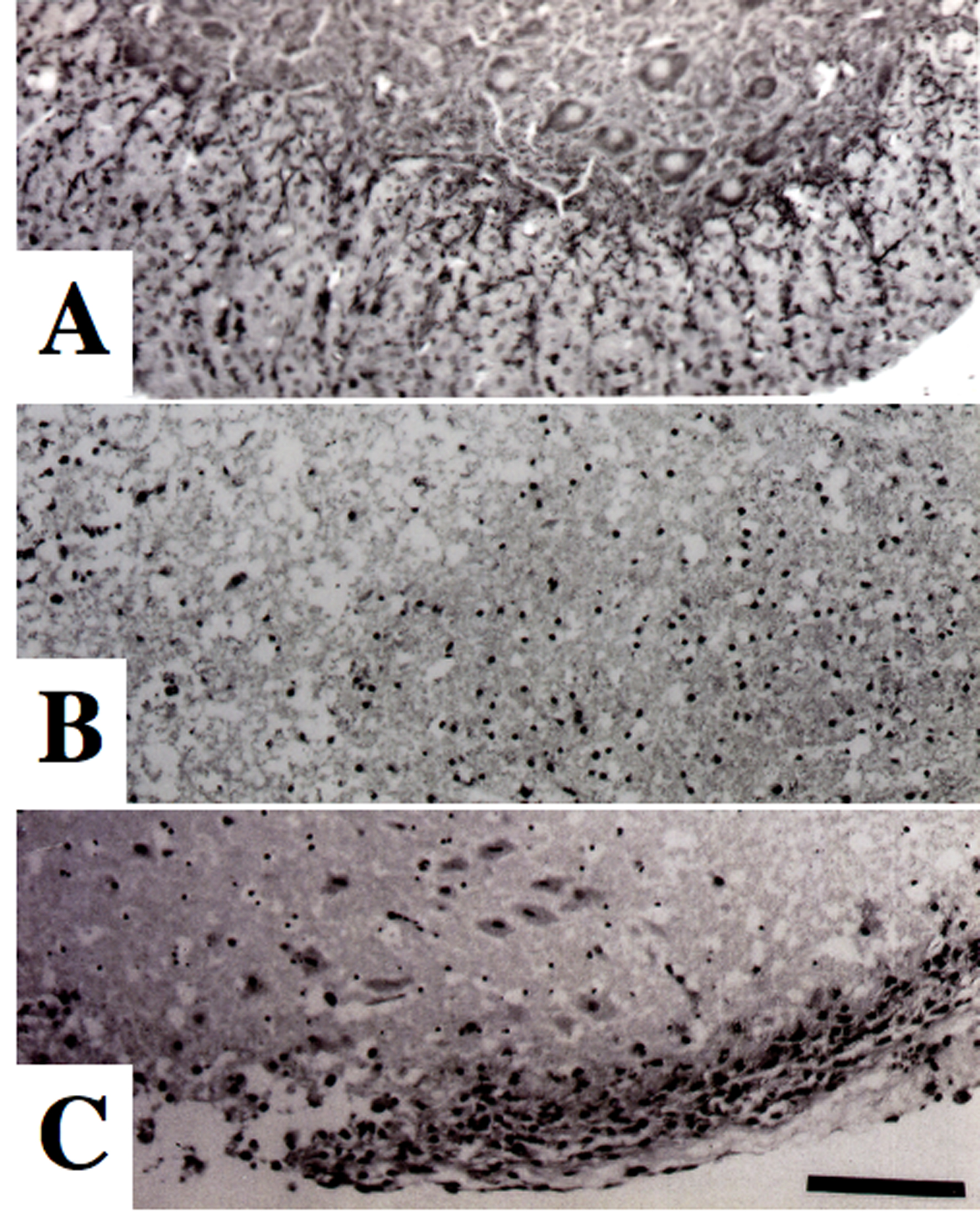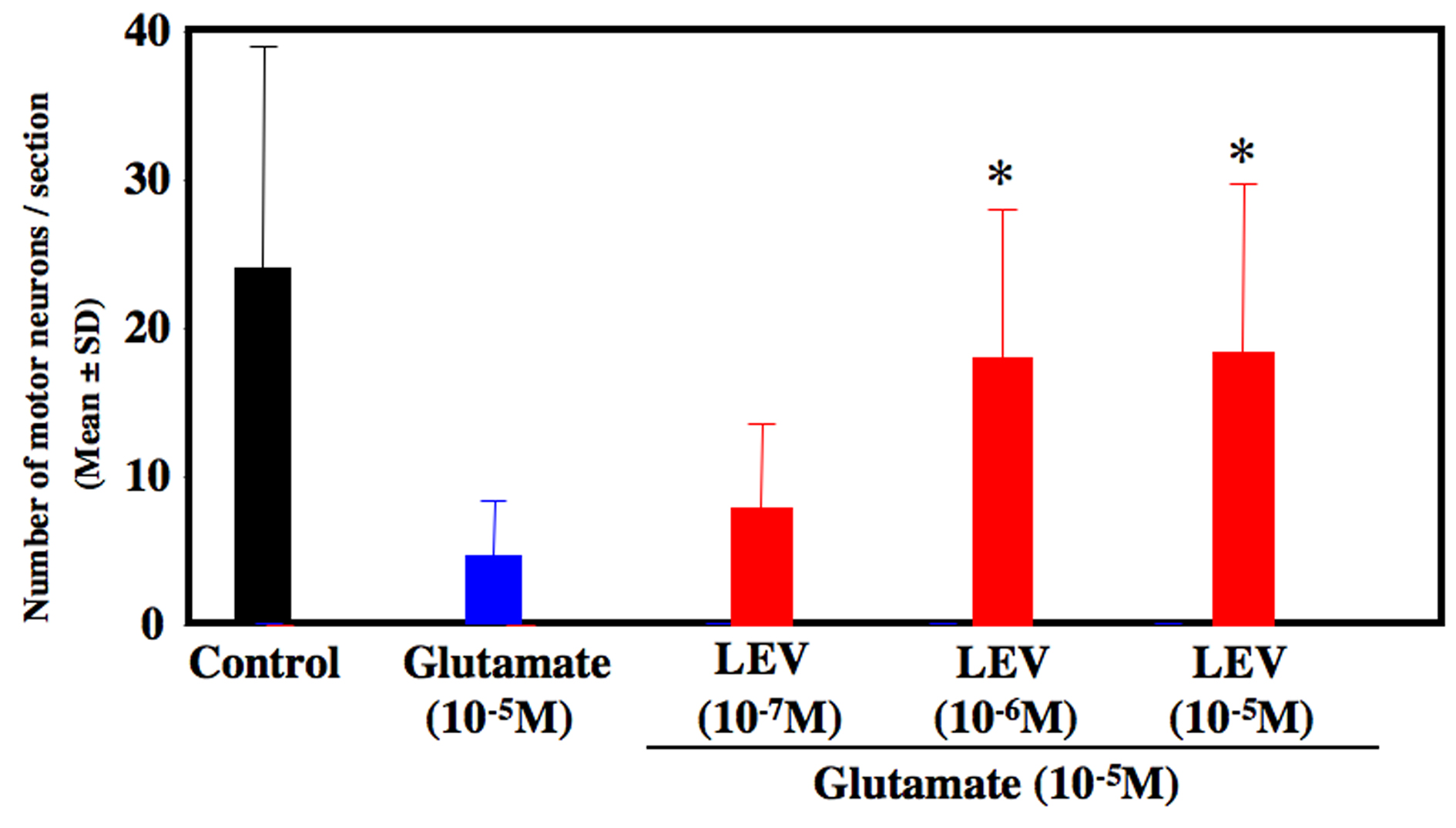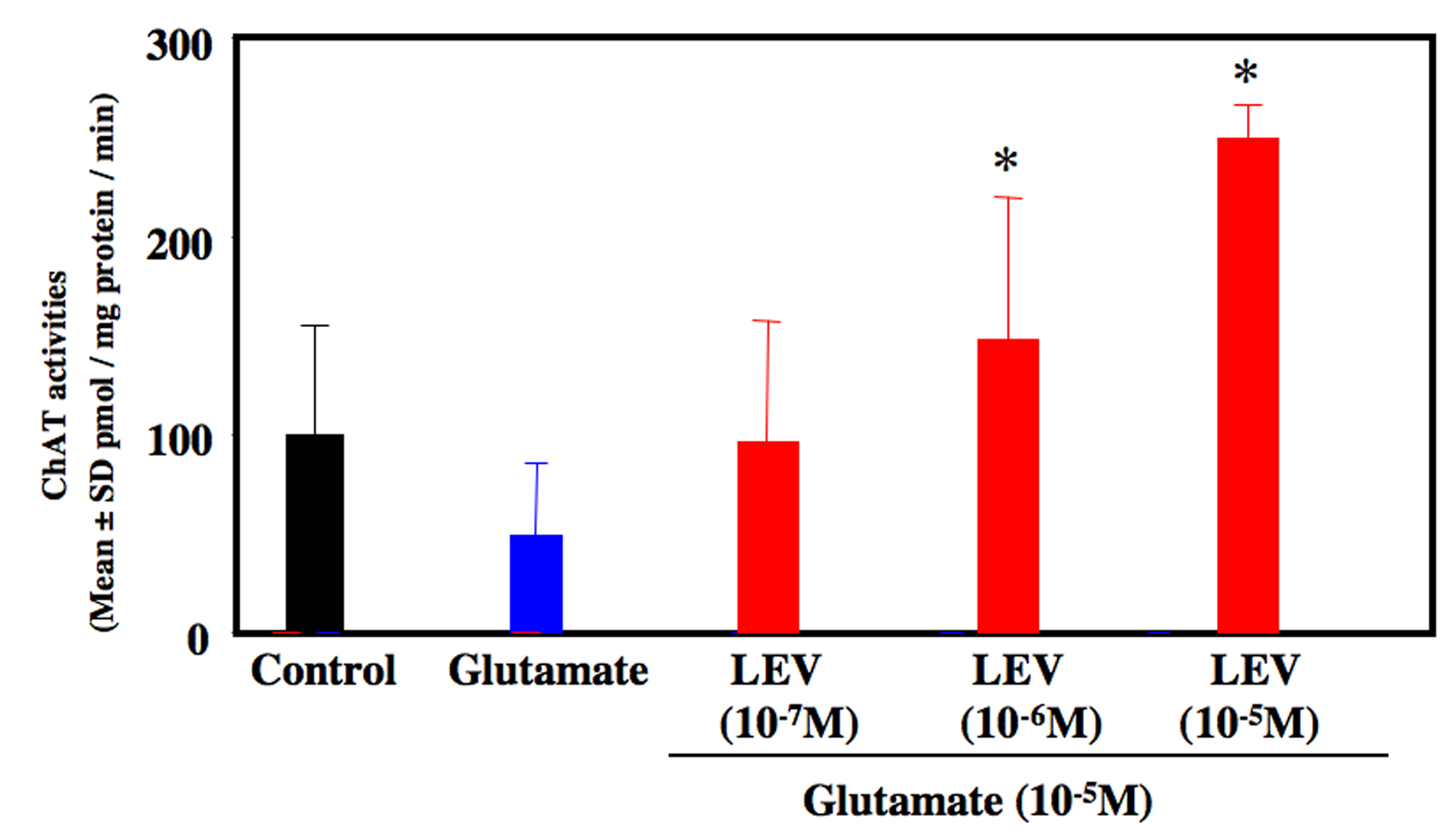
Figure 1. Morphological changes of spinal motor neurons on Nissl staining. (A) Control culture. (B) Glutamate-treated culture. (C) Culture treated with glutamate and levetiracetam (10-5 M). Glutamate administration produced a marked loss of motor neurons compared to control culture. Co-administration of levetiracetam attenuated the loss of motor neurons in glutamate-treated culture. Bar = 100 µm.

Figure 2. Number of surviving motor neurons. After 2 weeks of cultures, the number of motor neurons was decreased approximately 80 % in glutamate-treated culture compared to control culture. Levetiracetam treatment (10-6 and 10-5 M) inhibited the loss of motor neurons. *P < 0.05 between the glutamate group and the glutamate + levetiracetam group (10-6 and 10-5 M) by Scheffe’s test.

Figure 3. ChAT activity of organotypic spinal cord culture. Administration of glutamate reduced ChAT activities approximately 50 % compared to control culture. Co-administration of levetiracetam (10-6 and 10-5 M) increased ChAT activity compared to glutamate-treated culture. *P < 0.05 between the glutamate group and the glutamate + levetiracetam (10-6 and 10-5 M) group by Scheffe’s test.


